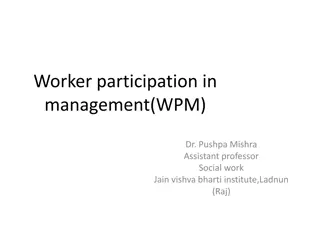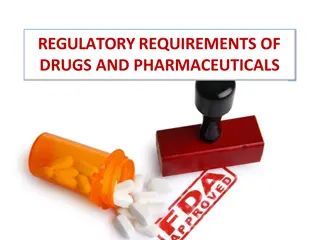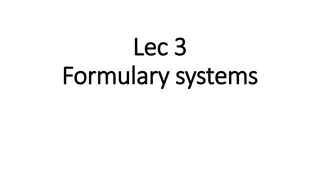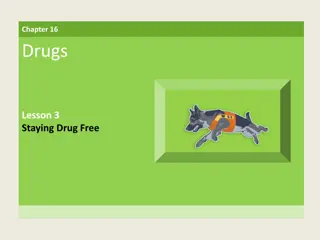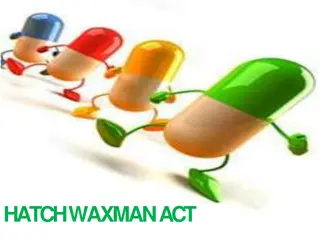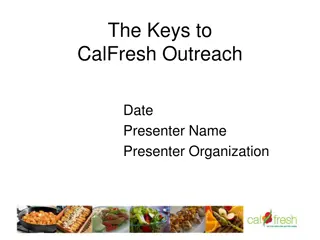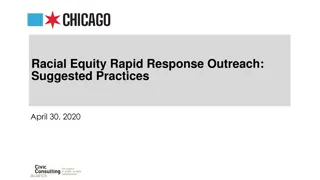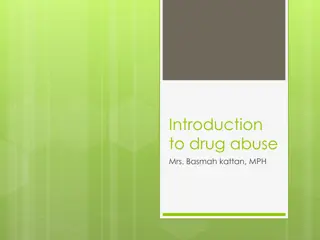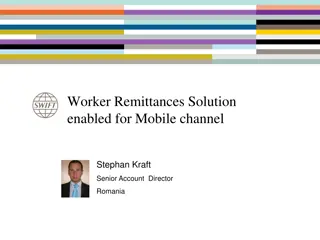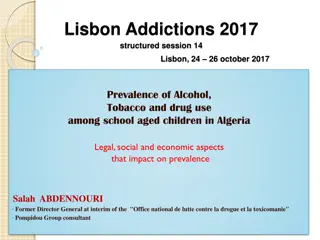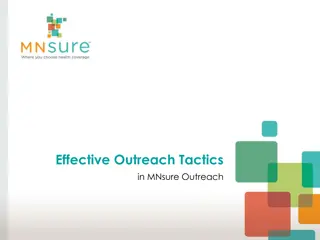Abdul's Journey: From Drug Use to Outreach Worker in Gombe State
Abdul, a former drug user turned outreach worker in Gombe State, Nigeria, shares his transformation story and the importance of harm reduction programs in improving injecting equipment quality. He highlights the impact of low dead space syringes and needles on reducing harm and criminalization associated with drug use.
Download Presentation

Please find below an Image/Link to download the presentation.
The content on the website is provided AS IS for your information and personal use only. It may not be sold, licensed, or shared on other websites without obtaining consent from the author. Download presentation by click this link. If you encounter any issues during the download, it is possible that the publisher has removed the file from their server.
E N D
Presentation Transcript
Abdullahi Intervention GOMBESTATE MARCH 2024
Thank you to my friends in INPUD, HRI and MDM for the chance to share feedback on low dead space syringes from Gombe State in Nigeria. My name is Abdul I am an Outreach Workers at DAPHO. DAPHO is Drug Free and Preventive Healthcare Organisation (DAPHO) was part of the national Needle and Syringe Programme Pilot that was funded by the Global Fund and implemented under the auspices of the Nigerian Federal Ministry of Health. I started this development journey as a frontline peer worker distributing needles and syringes in the places where I also brought and used drugs. Three years on I have progressed to being an outreach worker, got married and have taken a course in public administration. I am grateful to the sense of purpose and opportunity that has come from Aniedi Akipan and David Aba leadership of DAPHO and the solidarity that comes from my team members. I decided to stop taking drugs so I could better serve my community and I went through a cold turkey detox from heroin. I look forward to the arrival of Methadone in Nigeria, so my peers have access to Opioid Agonist Maintenance Treatment to give people options when they want to make positive changes around their drug use.
When I first started injecting drugs, we used oversize injecting equipment green 1.5 inch needles with 5ML barrels. This oversize equipment is all that was available, and it was painful to inject and left heavy scarring. The heavy scarring led to unwanted police attention exposing us to criminalisation and corruption. This also leads to people injecting in high-risk injecting sites like backs of legs or inner arms to reduce the risk of police detection. This shows how the promotion of harm reduction can be hampered by heavy criminalisation. I was very satisfied to be one of the peer workers consulted and trained in 2018 to support the introduction of Needle and Syringe Programme Pilot in Nigeria. This included a review of much better quality injecting equipment, including low dead space syringes and needles. We were able to meet with international consultants from Coact and Frontline AIDS alongside our Federal Ministry of Health Technical Working Group on Harm Reduction. We were able to consider the benefits of much finer and shorter low dead space syringes. We understand that there is much less blood left in the syringe and the fine needle also releases much less blood from the injecting site into the space where drugs are being prepared and used.
We could also see the value for some of having access to syringes with separate low dead space needles for people who have problems finding their vein. It s very nice to have this type of specialist equipment that reduces the harms associated with injecting drugs. We were also able to tell the international community-led technical advisor about the local patterns of injecting Pethidin and Ketamine from ampoules. This supported a discussion about the need for larger size syringes given the larger volume of liquid in these ampoules. It s great to know that our feedback is now being taken on-board by partners like Exchange Supplies as they design tailored injecting equipment that meets both the needs and practical realities faced by people who inject drugs in low and middle income countries. It was great to come out of the Planning and Implementation Phase of the Nigerian NSP Pilot in 2018 with a clear recommendation around 3 types of needles and syringes that should be provided through the NSP programme. However, it was disappointingly that these recommendations were not followed through into the procurement process. Instead, both the wrong type and poor quality equipment was purchased. We were provided with a single-use vaccine syringe which cannot be used by people who inject drugs, an insulin combination syringe but with a short needle for injecting drugs underneath the skin, and a low- grade blue needle and 3ML syringe.
Only that last option can be used by people who inject drugs. However, the low quality of the equipment has resulted in people who inject drugs facing problems with needles detaching during injection. In one case surgical intervention was required to address a detached needle that was floating in the vein of a community member. It is only because DAPHO has built a strong working relationship with the State Hospital who have in turn developed expertise in working with people who use drugs that the client could be persuaded to stay and receive surgical intervention. This story shows that we must educate procurement teams, so they understand which types of equipment are suitable for NSP and what is the required quality standard. It was frustrating that DAPHO s community-led feedback on the needles and syringes was ignored until our advice was confirmed by an international community-led consultant. We hope this will be a point of learning for partners new to buying harm reduction commodities. It is going to take time to educate local peers about the new range of low dead space syringes and needles. They are familiar with the oversize equipment, but they are also looking for better quality and more appropriate equipment. In the Unitaid project we will once again be able to consult people who inject drugs in Gombe so we can tailor our State NSP stock list to meet their preferences. DAPHO is happy to operate as a bridgebuilder using our privileged access and trusted status within the local drug using community.
AVAILABLE NEEDLE & SYRINGES BD 1ML SOLO SHOT 1ML INSULIN 2ML DETACHED



